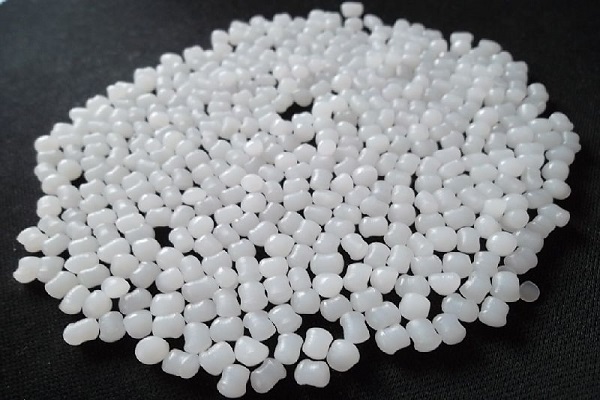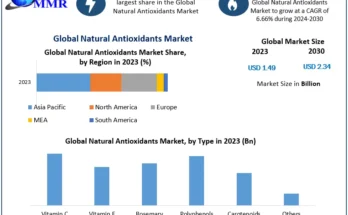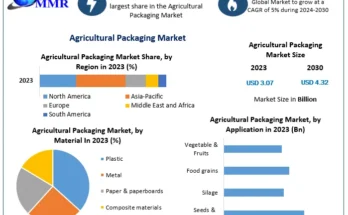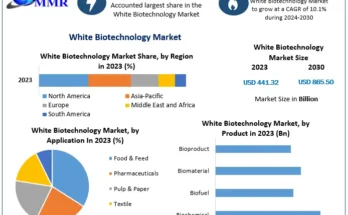Global Polypropylene Market has valued at USD125.8 billion in 2022 and is anticipated to project robust growth in the forecast period with a CAGR of 3.65% through 2028. The injection molding process entails injecting molten polypropylene into a mold, followed by rapid cooling. These characteristics are expected to drive the demand for polypropylene polymer types produced via injection molding. Furthermore, injection molding is increasingly being adopted by various industries including automotive, medical equipment, housewares, consumer goods, storage container packaging, musical instruments, and furniture. The market is projected to grow due to the rising consumption of polypropylene (PP) in end-use sectors such as automotive, packaging, and building & construction. The automotive sector, in particular, is witnessing increased utilization of PP for manufacturing lightweight vehicles to enhance fuel efficiency, which is expected to drive the market during the forecast period. However, the outbreak of COVID-19 in 2020 has significantly impacted the supply of PP. In recent years, the building & construction industry in the United States has witnessed favorable growth, leading to increased demand for polypropylene. PP is being extensively used in residential housing and industrial applications within the construction sector. The overall U.S. construction industry is anticipated to experience favorable growth, driven by factors such as new import tariffs, evolving trade deals, large-scale infrastructure projects, and immigration reforms. Additionally, other application areas of polypropylene are expected to continue driving market growth in the forecast period.
Key Market Drivers
Surge in Demand from Food and Beverage Packaging Industries
The global polypropylene market has experienced robust growth driven by numerous industries, with a significant impetus coming from the food and beverage packaging sectors. As the food and beverage industry continues to evolve in response to changing consumer preferences and the demand for convenience, the role of polypropylene as a versatile, safe, and sustainable packaging material has become increasingly crucial. Polypropylene’s exceptional barrier properties make it an excellent choice for food and beverage packaging, providing protection against external elements such as moisture, light, and oxygen. This preservation ensures the freshness, taste, and nutritional quality of packaged goods, thereby enhancing consumer satisfaction.
Moreover, polypropylene’s versatility allows it to be used in various packaging formats, ranging from rigid containers to flexible pouches and films. This adaptability caters to a wide range of food and beverage products, accommodating diverse sizes, shapes, and storage requirements. Additionally, the lightweight nature of polypropylene packaging not only reduces transportation costs but also contributes to reduced carbon emissions. Furthermore, its durability ensures that products remain intact during handling, transportation, and storage, minimizing the risk of damage or spoilage.
Download FREE Sample Report @ https://www.techsciresearch.com/sample-report.aspx?cid=2257
Polypropylene’s microwave-safe and refrigerator-friendly properties make it an ideal choice for convenience foods and ready-to-eat meals. Consumers can conveniently heat and store their meals directly in polypropylene packaging, contributing to its popularity among busy individuals and families. Moreover, polypropylene is recyclable, allowing for its reintegration into the production cycle. Packaging manufacturers are increasingly incorporating recycled polypropylene to create more sustainable packaging solutions, reducing the demand for virgin materials, and minimizing the environmental impact.
Growing use of Polypropylene in Medical Industry
Polypropylene, a versatile thermoplastic polymer, has gained significant traction across various industries due to its exceptional combination of properties. Among these industries, the medical sector stands out as a prominent driver of the global polypropylene market’s growth. The outstanding biocompatibility of polypropylene makes it highly suitable for medical devices that directly interact with the human body, as it does not elicit adverse reactions or complications. To ensure patient safety, medical devices and equipment necessitate rigorous sterilization procedures. Thankfully, polypropylene can endure multiple sterilization methods such as autoclaving, gamma irradiation, and ethylene oxide gas sterilization without compromising its mechanical or chemical properties. Lightweight yet durable, polypropylene enables ease of use and patient comfort, rendering it an ideal material for applications like syringes, medical trays, and surgical instruments. Furthermore, its moldability and design flexibility empower manufacturers to create intricate and complex shapes, which is crucial for producing medical devices with precise geometries that ensure optimal functionality and ergonomics. Additionally, polypropylene finds applications in laboratory equipment production, including petri dishes, test tubes, and vials. With its transparency, chemical resistance, and ease of moldability, polypropylene guarantees accurate and reliable experimental results.
Rise in Demand of Polypropylene from Automotive Industry
Polypropylene, a versatile and cost-effective thermoplastic polymer, has witnessed a significant surge in demand across various sectors. Notably, the automotive industry has emerged as a prominent driver of this growth. One of the primary factors driving the demand for polypropylene in the automotive sector is the pursuit of lightweighting. As automakers strive to enhance fuel efficiency, minimize emissions, and improve overall vehicle performance, the selection of materials plays a critical role. Polypropylene’s low density contributes to lightweight components, thereby reducing vehicle weight. This, in turn, leads to improved fuel efficiency and reduced environmental impact. Polypropylene presents an appealing value proposition due to its relatively low production costs and ease of processing.
This aligns with the automotive industry’s objective of achieving a balance between material performance, cost, and affordability, influencing the choice of materials for various vehicle components. Moreover, the versatility of polypropylene extends to design flexibility, enabling manufacturers to create intricate and visually appealing components. This attribute is highly valued in the automotive industry as it allows for the production of aesthetically pleasing interiors and exteriors. With its adaptability to various molding techniques, polypropylene empowers designers to transform their creative concepts into tangible and functional parts. Furthermore, polypropylene boasts inherent durability, chemical resistance, and impact resistance, making it an ideal material for producing exterior and interior parts that can withstand challenges without compromising safety or longevity. The rise of electric and hybrid vehicles presents new opportunities for polypropylene in the automotive sector. These vehicles require lightweight materials to offset the weight of batteries and enhance overall efficiency. Given its role in battery components, electrical housings, and lightweight interior parts, polypropylene assumes a vital position in this growing market segment.
Key Market Challenges
Volatility in Prices of Feedstock
Feedstocks, primarily propylene, serve as the fundamental materials necessary to produce polypropylene. Propylene is obtained from fossil fuels like crude oil and natural gas through refining and cracking processes. Sharp increases in feedstock prices can lead to higher production costs, potentially impacting manufacturers’ profit margins. Volatility in feedstock prices can also influence the competitive dynamics within the polypropylene market, necessitating adjustments in pricing strategies by manufacturers in response to changing production costs. In periods of elevated feedstock prices, companies may be compelled to pass on cost increases to customers, thereby potentially affecting demand and market share. Additionally, fluctuations in feedstock prices can have implications for investment decisions within the polypropylene industry. Manufacturers considering expansion projects, or the establishment of new production facilities may exhibit hesitancy if they are unable to accurately forecast the long-term costs associated with feedstocks.
Disruption in Supply Chain
Ensuring the reliable and efficient flow of raw materials, production processes, and distribution networks is of utmost importance for the stability and growth of the polypropylene industry. Disruptions in the supply chain can have far-reaching consequences, impacting production, prices, and the overall market landscape. Any disruptions in the availability of these feedstocks due to geopolitical tensions, production limitations, or unforeseen events can result in raw material shortages. The transportation of polypropylene resin, a bulk product, involves complex logistics networks. Transportation delays caused by factors such as port congestion, weather-related disruptions, or labor strikes can lead to production downtime and create bottlenecks in the supply chain. These delays affect delivery schedules and increase operational costs. Supply chain disruptions can compromise quality and compliance. In cases where alternative suppliers are sought in response to disruptions, the quality of raw materials may vary, resulting in inconsistent product quality that could impact downstream processes and applications.
Growing Environmental Concerns
Polypropylene, like other plastics, is a major contributor to plastic pollution. Improper disposal and inadequate recycling infrastructure have led to the accumulation of plastic waste in landfills, oceans, and natural ecosystems. Addressing plastic pollution requires innovative waste management strategies, increased recycling rates, and the development of biodegradable alternatives. The production of polypropylene involves energy-intensive processes that emit greenhouse gases, contributing to climate change. The industry’s carbon footprint has raised concerns about its role in exacerbating global warming. To mitigate these effects, the polypropylene sector needs to embrace cleaner and more energy-efficient production methods, reduce emissions, and explore renewable energy sources. Moreover, polypropylene-based products, especially microplastics, can find their way into the environment, causing harm to ecosystems, wildlife, and human health. Addressing the issue of microplastics requires adopting better filtration systems in production processes and reducing the prevalence of these tiny particles in consumer goods.
Key Market Trends
Advancements in Processing Techniques
The evolution of processing techniques is a prominent trend that is reshaping the global polypropylene market, presenting new opportunities for enhanced product performance, sustainability, and efficiency. Advancements in injection molding techniques are unlocking novel design possibilities, precise manufacturing, and material optimization. For instance, micro-injection molding enables the production of intricate micro-sized parts with exceptional precision, finding applications in medical devices and electronics. Furthermore, advancements in blow molding techniques are facilitating the creation of complex shapes, varying wall thicknesses, and improved product quality. From large industrial containers to intricate medical devices, blow molding is emerging as a versatile method for shaping polypropylene. Moreover, polypropylene properties can be tailored by utilizing advanced catalysts and polymerization techniques, such as Ziegler-Natta and metallocene catalysts, enabling precise control over molecular structure and properties. This leads to the development of specialized polypropylene grades optimized for specific applications, including automotive components, medical devices, and textiles.
Segmental Insights
Type Insights
In 2022, the polypropylene market was dominated by the homopolymer segment and is predicted to continue expanding over the coming years. Homopolymer polypropylene’s versatility is a key factor driving its dominance. It can be tailored through additives, processing techniques, and formulations to meet a wide spectrum of application requirements. From packaging and automotive components to consumer goods and textiles, homopolymer polypropylene demonstrates its adaptability across diverse industries. Cost is a crucial factor in material selection for industrial applications. Homopolymer polypropylene’s relatively low cost compared to other polymers, coupled with its versatile performance, makes it an attractive choice for manufacturers seeking a balance between functionality and affordability. Homopolymer polypropylene is highly recyclable, allowing it to be reclaimed and reused in various applications. The growing emphasis on sustainability and circular economy practices favors materials that can be easily recycled.
Application Insights
In 2022, the Polypropylene market was dominated by Injection Moulding segment and is predicted to continue expanding over the coming years. Injection moulding is a high-speed production process that enables the rapid manufacturing of polypropylene products. The cycle times for each moulded part are relatively short, allowing manufacturers to produce large quantities in a relatively short period. This efficiency is crucial in meeting the demands of industries with high-volume production requirements. Furthermore, polypropylene, being a highly versatile thermoplastic, is well-suited for injection moulding. Its compatibility with injection moulding equipment and processes ensures that the material flows smoothly, fills the moulds properly, and results in well-defined parts with consistent properties.
Related Reports
Synthetic Zeolites Market [2028] – Analysis, Trends, & Insights
Monochloroacetic Acid Market – Opportunities, Size & Growth [2028]
Table of Content-Polypropylene Market
- Product Overview
1.1. Market Definition
1.2. Scope of the Market
1.2.1. Markets Covered
1.2.2. Years Considered for Study
1.2.3. Key Market Segmentations
- Research Methodology
2.1. Objective of the Study
2.2. Baseline Methodology
2.3. Key Industry Partners
2.4. Major Association and Secondary Sources
2.5. Forecasting Methodology
2.6. Data Triangulation & Validation
2.7. Assumptions and Limitations
- Executive Summary
3.1. Overview of the Market
3.2. Overview of Key Market Segmentations
3.3. Overview of Key Market Players
3.4. Overview of Key Regions/Countries
3.5. Overview of Market Drivers, Challenges, and Trends
- Voice of Customers
- Global Polypropylene Market Outlook
5.1. Market Size & Forecast
5.1.1. By Value & Volume
5.2. Market Share & Forecast
5.2.1. By Type (Homopolymer, Copolymer and Others)
5.2.2. By Application (Injection Moulding, Fiber & Raffia, Film & Sheet, Blow Moulding and Others)
5.2.3. By End-Use Industry (Packaging, Automotive, Build & Construction, Medical, Electrical & Electronics, and Others)
5.2.4. By Region
5.2.5. By Company (2022)
5.3. Market Map
- North America Polypropylene Market Outlook
6.1. Market Size & Forecast
6.1.1. By Value & Volume
6.2. Market Share & Forecast
6.2.1. By Type
6.2.2. By Application
6.2.3. By End-Use Industry
6.2.4. By Country
6.3. North America: Country Analysis
6.3.1. United States Polypropylene Market Outlook
6.3.1.1. Market Size & Forecast
6.3.1.1.1. By Value & Volume
6.3.1.2. Market Share & Forecast
6.3.1.2.1. By Type
6.3.1.2.2. By Application
6.3.1.2.3. By End-Use Industry
6.3.2. Mexico Polypropylene Market Outlook
6.3.2.1. Market Size & Forecast
6.3.2.1.1. By Value & Volume
6.3.2.2. Market Share & Forecast
6.3.2.2.1. By Type
6.3.2.2.2. By Application
6.3.2.2.3. By End-Use Industry
6.3.3. Canada Polypropylene Market Outlook
6.3.3.1. Market Size & Forecast
6.3.3.1.1. By Value & Volume
6.3.3.2. Market Share & Forecast
6.3.3.2.1. By Type
6.3.3.2.2. By Application
6.3.3.2.3. By End-Use Industry
- Europe Polypropylene Market Outlook
7.1. Market Size & Forecast
7.1.1. By Value & Volume
7.2. Market Share & Forecast
7.2.1. By Type
7.2.2. By Application
7.2.3. By End-Use Industry
7.2.4. By Country
7.3 Europe: Country Analysis
7.3.1. France Polypropylene Market Outlook
7.3.1.1. Market Size & Forecast
7.3.1.1.1. By Value & Volume
7.3.1.2. Market Share & Forecast
7.3.1.2.1. By Type
7.3.1.2.2. By Application
7.3.1.2.3. By End-Use Industry
7.3.2. Germany Polypropylene Market Outlook
7.3.2.1. Market Size & Forecast
7.3.2.1.1. By Value & Volume
7.3.2.2. Market Share & Forecast
7.3.2.2.1. By Type
7.3.2.2.2. By Application
7.3.2.2.3. By End-Use Industry
7.3.3. United Kingdom Polypropylene Market Outlook
7.3.3.1. Market Size & Forecast
7.3.3.1.1. By Value & Volume
7.3.3.2. Market Share & Forecast
7.3.3.2.1. By Type
7.3.3.2.2. By Application
7.3.3.2.3. By End-Use Industry
7.3.4. Italy Polypropylene Market Outlook
7.3.4.1. Market Size & Forecast
7.3.4.1.1. By Value & Volume
7.3.4.2. Market Share & Forecast
7.3.4.2.1. By Type
7.3.4.2.2. By Application
7.3.4.2.3. By End-Use Industry
7.3.5. Spain Polypropylene Market Outlook
7.3.5.1. Market Size & Forecast
7.3.5.1.1. By Value & Volume
7.3.5.2. Market Share & Forecast
7.3.5.2.1. By Type
7.3.5.2.2. By Application
7.3.5.2.3. By End-Use Industry




